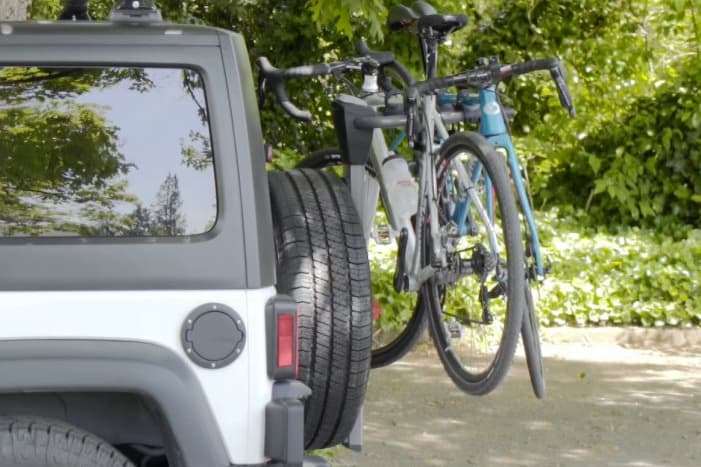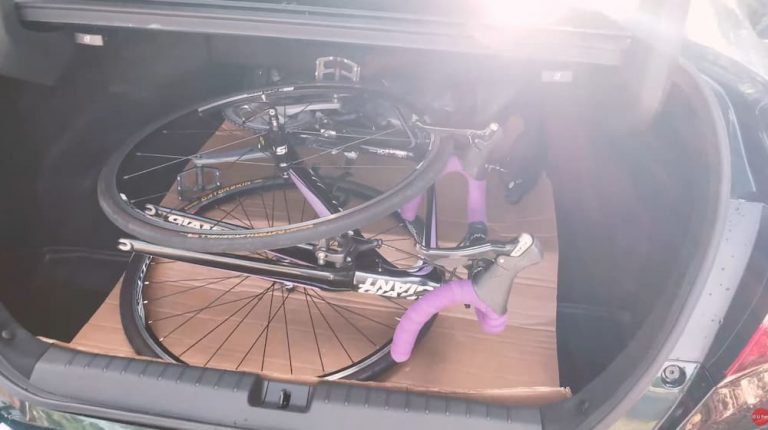Are Bike Racks Covered By Car Insurance?
Facing the uncertainty of whether your bike rack is covered by car insurance can be frustrating. You’ve invested in a quality rack to transport your bike safely, but the nagging worry about its protection in case of theft or damage lingers. Navigating the maze of insurance policies, with their complex terms and conditions, only adds to the stress.
As a cycling enthusiast who’s been through this dilemma, I understand the importance of securing your cycling gear. That’s why I delved deep into the intricacies of car insurance coverage for bike racks. This article is a comprehensive guide, shedding light on the key aspects of insurance policies related to bike racks. By sharing my findings, I aim to equip you with the knowledge needed to make informed decisions, ensuring your cycling adventures are worry-free and your gear, including that crucial bike rack, is adequately protected.
Contents
Key Takeaways
| Policy Details Matter: Understanding the specifics of your car insurance policy is crucial for determining bike rack coverage. |
| Proactive Communication is Key: Engage in discussions with your insurance provider before installing a bike rack to avoid coverage gaps. |
| Consider Additional Insurance: For high-value bike racks, explore a floater policy for extra protection. |
| Report Theft Promptly: In case of theft, report immediately and check the homeowner’s or renter’s insurance for coverage. |
| Understand Value Calculations: Familiarize yourself with how insurers calculate the value (ACV vs RCV) of your bike rack for potential reimbursement. |
How Are Bike Racks Affected by Auto Coverage?
Insurance is usually contextual and is governed not only by your car insurance but also by your renter’s or homeowner’s insurance. If your policy includes uninsured motorist coverage and an uninsured motorist damages your bike rack or bike, your insurer will reimburse you for the damage by the actual cash value (ACV).
The ACV will be reimbursed if an insured motorist dismantles your bike or rack. It’s important to know that the ACV is the actual value of the bicycle or rack, minus age, wear and tear. Therefore, you’ll not receive full reimbursement for the rack or bike.
Related reading: Fox Tailgate Bike Pad Reviews & Buying Guide
Is the Bike Rack on the Back of Your Vehicle Covered?
If your bike rack is stolen or damaged, your car insurance will almost certainly pay for the damage. This is true in most states. However, there are a few things to keep in mind when purchasing car insurance. Like any other legal instrument, car insurance is full of legal wording, often hidden in the fine print.
For example, if you add a roof rack for your bike, your car insurance company may consider that a modification to the vehicle and void your coverage altogether. Plus, it won’t be discovered until you need your car insurance, which is the worst possible time to miss it.
Almost all basic car insurance plans cover bike racks because they’re meant to be used with the car and are mounted on the vehicle. Since they don’t usually deal with the technical aspects of car insurance and coverage issues, your agent may not be the best advisor on the matter. The insurance claims team is the best source of information and should be willing to help you with this matter. Contact them through your agent.
Related reading: Best Rear Bike Rack Reviews & Buying Guide
Where the Coverage Varies
Bikes and racks are often covered by car insurance, but coverage varies depending on the terms. Look at the following cases. If the bike or rack is attached to your car, it gets damaged. In most states, damage can be claimed under the personal property clause of your renters or homeowners insurance policy. If your policy covers replacement cost value (RCV), the company will reimburse you for that cost minus your deductible. If your insurance covers actual cash value (ACV), the insurance company will only compensate for the existing loss in value.
If your rack or bike is attached to your car and it’s damaged by another vehicle. If the second driver is responsible for the damage, their insurance will cover the entire ACV. If the driver is uninsured, the car’s insurance company to which the rack or bike is attached will pay 100% of the ACV. This reimbursement will be made only if the car owner has insurance for uninsured motorist coverage.
If your rack or bicycle is attached to your car and a hit-and-run driver wrecks it, such damage will be covered by the renter’s or owner’s insurance. ACV will be reimbursed less than the deductible. If it’s attached to your car, the bike is wrecked by someone else. In this case, the ACV is paid to the bike owner by the liability department of the car insurance company. Your bike was stolen while it was attached to your car. The homeowner’s or renter’s insurance will pay the ACV less the deductible if the accident is reported to the police.
Related reading: Best Truck Bed Bike Rack Reviews and Buying Guide
What Kind of Insurance Does A Bike Rack Need?
If your bike was damaged by another person, their liability insurance would pay for the damage. Your property insurance might reimburse the damage through comprehensive insurance if the damage was to the rack and not the bike.
There’s also what’s called a floater policy. This type of insurance provides additional protection for personal possessions that traditional types of insurance don’t. Floaters insurance covers, for example, cutlery, wine collections, jewels, bicycle racks, photographic equipment, and other valuables.
It applies primarily to personal possessions that can be transported freely. However, if you mount a rack on your car and scratch the bodywork, the insurance won’t cover the repair.
Related reading: Car Wash with A Bike Rack – Is It Safe?
Frequently Asked Questions
Can I claim for a bike rack damaged in a car accident under my auto insurance?
Yes, most auto insurance policies cover damages to bike racks if they are attached to your vehicle during a car accident. However, it’s crucial to check your specific policy details, as coverage can vary.
What if my bike rack is stolen while attached to my car?
In cases of theft, your homeowner’s or renter’s insurance might cover the loss. It’s important to report the theft to the police and check your policy for any specific coverage for accessories like bike racks.
Are there any additional insurance options for high-value bike racks?
For expensive bike racks, consider a floater policy. This type of policy offers extra protection for valuable personal items, including bike racks, and can be added to your existing homeowner’s or renter’s insurance.
Conclusion
Reflecting on the ins and outs of car insurance coverage for bike racks, I’ve gained a deeper appreciation for the complexities involved. Throughout my research, I uncovered a variety of factors that influence whether a bike rack is covered in the event of theft or damage. The crux of the matter lies in the fine print of your insurance policy, where details like actual cash value and replacement cost value come into play.
My advice to fellow cyclists? Don’t leave anything to chance. Engage in a detailed discussion with your insurance provider before attaching a bike rack to your vehicle. This conversation is a crucial step in understanding the scope of your coverage. It’s better to be in the know beforehand than to face unexpected gaps in coverage later.
In the cycling world, we often focus on the ride itself, but ensuring our gear is protected is equally vital. Just as we meticulously choose our bikes and routes, selecting the right insurance for our accessories, such as bike racks, is an essential aspect of our cycling journey. By arming ourselves with knowledge and making informed choices, we can pedal forward with confidence, knowing that both our rides and our gear are well-protected.





